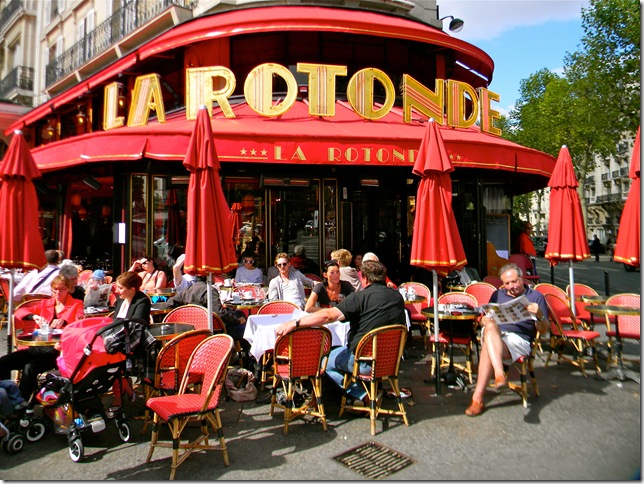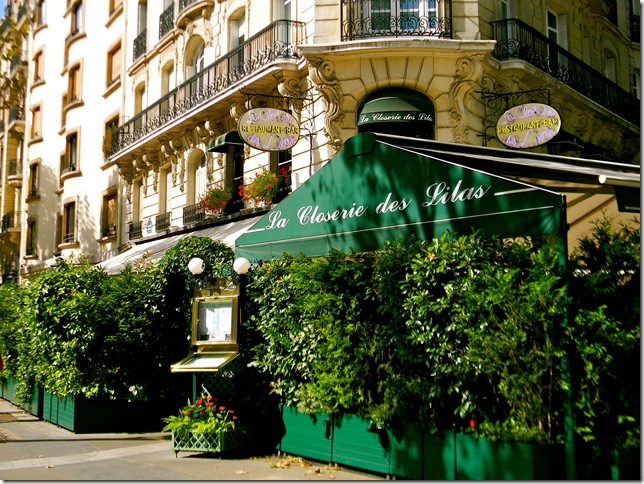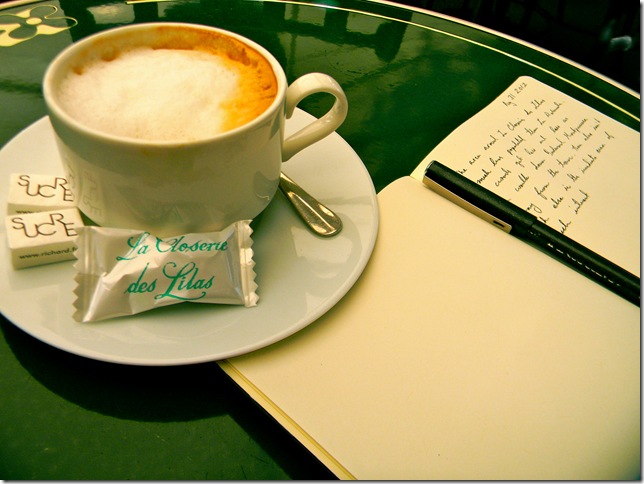By Chloe Elder
Ah, Paris! (Cue the Edith Piaf.) The City of Lights! The City of Love!
The City of Americans?
Mais, oui! Many of those chic Parisians strolling around this famous city are, in fact, just Americans who happen to live in Paris. I, too, am just another clichéd example of the American in Paris: an expatriate from Florida who has come looking for life, liberty, and the pursuit of a college degree.
But the American in Paris hasn’t always been just a cliché. The city has a rich history of Americans, as well as other expatriates, living in the city in the 1920s until the start of the Second World War. Expats were drawn to the lively artistic and intellectual scene that was often more accommodating than their homeland had been. Americans mingled with other writers, musicians, and artists in the city and formed an artistic community of their own as well as a very lively social community scattered throughout a few well-known cafés that still survive in Paris.
Each of these cafés boasts a clientele that would stock a bookshelf. Ernest Hemingway, especially, was a regular patron at many cafés around town where he would do much of his writing. And it is through his writing in A Moveable Feast and The Sun Also Rises that we have a record of which cafés were la crème de la crème.
Hemingway’s Jake Barnes had lamented in the novel The Sun Also Rises, “No matter what cafe in Montparnasse you ask a taxi-driver to bring you to from the right bank of the river, they always take you to the Rotonde.”
Today it is still a bustling corner café. The intersection is busy (I almost got run over by a motorcycle on the way there) and the café-goers are numerous (over 30 patrons at 5 in the afternoon in late August) and varied in age and style. The one thing they have in common: a drink on the table and an eye on the sidewalk.
I, too, observed my surroundings. My waiter Pierre, 52, and from Paris, wore a stereotypical costume of a white dress shirt, black vest and trousers, and completed the ensemble with a black bow tie and stained white apron. I looked at the crowd, mostly in pairs or alone, who were either intent in conversation (all of which was in French) or lost in their own thoughts. It was crowded and unassuming—the perfect place to be alone in a crowd.
Then, I observed the check.
€6.50 ($8.95) for a glass of chardonnay? In France? I finished my glass, paid, and decided next time I want some white wine I’ll get a whole bottle for the same price.
Just down the boulevard, walking away from the Tour Montparnasse, is another regular pit stop of Hemingway’s — La Closerie des Lilas at 171 Boulevard Montparnasse. The café and restaurant were also frequented by Henry James, Henry Miller, Oscar Wilde, and F. Scott Fitzgerald among others.
The anonymity of crowded La Rotonde dissipates as the street becomes less and less populated, and the closed-off entrance to the café suggests exclusivity. I walk into the terrace section, so enclosed by potted plants so that you may forget the city altogether aside from the street noise. I attract looks from the few patrons there, singled out as an American tourist who must’ve read about the café in her guidebook. Au contraire mon frère, on both counts.
I actually read about Lilas in Hemingway’s A Moveable Feast. “The Closerie des Lilas…was one of the nicest cafés in Paris. It was warm inside in the winter and in the spring and fall it was very fine outside with the tables under the shade of the trees on the side where the statue of Marshal Ney was, and the square, regular tables under the big awnings along the boulevard.”
He also wrote, “But the Closerie de Lilas was such a fine place to write and so convenient that it was worth the risk of being bothered.”
There was definitely no risk of my being bothered, but there was a risk of not getting the waiter’s attention to pay for my €4.50 ($6.20) café crème. At around 4:30 in the afternoon, the waiters seem more intent on preparing the indoor restaurant (a lavish art deco space) for the dinner rush. It attracts much more attention to the Lilas than café hour and for much more money.
Finally, Les Deux Magots, allegedly Hemingway’s favorite and the most famous and touristic of the Parisian literary cafés. The café has seated the haut of the 1920’s Parisian culture such as James Joyce, Picasso, Jean-Paul Sartre, Simone de Beauvoir, Albert Camus, and André Breton. Located at 6 Place Saint-Germain-des-Prés, Les Deux Magots overlooks the bustling boulevard, the church of the same name, and other noteworthy historical cafés, Brasserie Lipp and Café de Flore.
I ask my Parisian waiter Dziede, 45, whether he sees more tourists or true Parisians at his place. Although I have half an eye on the passersby taking photographs and patrons snapping a photo before stepping in, and I know his answer before his accented English says “tourists.”
He does, however, point out that there seem to be a lot more Parisians at Café de Flore down the street if that’s what you’re into. And after 18 years working at Les Deux Magots, Dziede has seen all the tourists come and go. “Any changes at the café?” I ask.
“Less money,” he says.
Most patrons do seem to be casually dressed, but short of those baseball caps and backpacks that plague some tourists. There is still, however, the occasional glimpse into the past: an old French gentleman dressed in trousers and a sport coat (even in the summer heat) sitting and reading his newspaper with a magnifying glass and slowly sipping his coffee.
Yes, the famous historical cafés are fun, but a stroll in any direction will lead one to a corner café where you can park your derriere for minutes or hours among the Parisians, and, well, the Americans.
Chloe Elder is a graduate of the Dreyfoos School of the Arts and a student at the American University of Paris.


